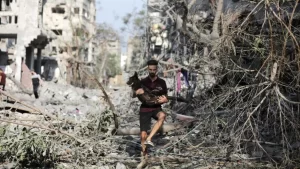Should we publish this video or not? The unanimous answer came from the team members, and it was a rejection.
We have been following many social media pages that have been posting this video with the intention of sparking public outrage against it. Several individuals have also contacted us through my personal account and the account of the Palestinian Association for Animal Welfare on social media, asking why this is happening and how to verify the sources of these videos. They are also questioning the actions taken for the treatment, rehabilitation, or punishment of those committing crimes against defenseless animals, and whether the existing laws are sufficient for this purpose.
A few days after a cold-blooded act of cruelty, where a cat was brutally killed by teenage girls in one of the world’s cities, a similar case reached us from our Palestinian reality. The cat was unable to walk on its hind legs, seemingly having lost the ability to feel pain or having become accustomed to it due to paralysis in the rear part of its body.
One of the first things that crossed our minds is the importance of controlling and regulating the dissemination of such videos before making them available in front of children, especially those who may have personal issues and an abundance of energy that might turn into violent actions as they attempt to imitate what they see. This poses a significant threat to children’s personal development and growth.
When the cat was found by some adults in a very bad condition, they brought it to the association. It was extremely fearful and completely helpless. However, it seems that whoever abused the cat could not continue with their crime and stopped it. This raises more questions: Was it done for experimentation? Or is it because violence has become normalized, contributing to the proliferation of violent behavior? Before reaching us, the cat was left for a period of time, allowing parasites to infest various parts of its damaged body. It underwent surgery, cleaning, and was provided with nutrition and anti-inflammatory medications, but its body remained unable to continue.
Many of the current scenes being displayed or circulated on screens worldwide initially shock us, and in response, we may recoil from their actions. However, we become accustomed to them, and after that, we accept them as something commonplace in human society, and we coexist with them. Some individuals even long for and acquire skills and curiosity to experiment, causing harm to animals as a form of entertainment.
We have mentioned several times that the cases we receive are merely symptoms of a human psychological disorder. Rescuing dogs and cats will not prevent such incidents from recurring with other animals. They will happen repeatedly, and therefore, the focus should always be on addressing the root cause, which is human behavior.
I will be very frank with you; events like these within our community, as animal welfare organizations, resonate strongly with the emotions of the public. Even if these cases are few, they are presented as success stories and receive the approval of others. People rally to provide support and funding for these causes. But, instead of merely being spectators to such barbaric acts, we must change our behavior to the positive and become proactive when given the opportunity to stop similar actions. Even if this intervention is not direct, it can be helpful by finding individuals who can help injured animals or by providing donations to assist these animals.
These events and acts filled with violence bring us back to the traditional question: Will we stop our activities and cease saving animals if these crimes cease to exist? Will we, as advocates for animals, lose our significance?
By comparison, consider a similar question: In the event that people stop committing crimes, will the activities of the legal profession, lawyers, judges, and police cease to exist?
Our experience in this field raises philosophical questions about the utility of these activities or shifting from saving animals to raising awareness and protecting them as a deterrent to cruelty. Just as the police work to prevent crimes or respond when they occur, our work should focus on addressing the problem by treating the root cause, which is human behavior.
We need a mechanism that can help achieve this goal and have a positive impact on regulating the content of videos circulated on social media. We need mechanisms that can help strike a balance between raising awareness and deterring such crimes.





